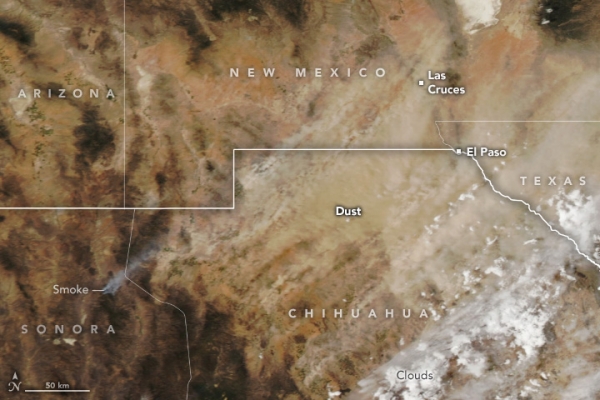Spring and early summer are generally dusty in the Borderplex region of the Chihuahuan Desert—a transnational area that spans parts of southern New Mexico, West Texas, and the Mexican state of Chihuahua.
Spring and early summer are generally dusty in the Borderplex region of the Chihuahuan Desert—a transnational area that spans parts of southern New Mexico, West Texas, and the Mexican state of Chihuahua. With the region gripped by exceptional drought, this has been especially true in 2025.
The latest in a string of storms lofted particles from dried lakes and other parched sources in northern Chihuahua and New Mexico and sent them streaming toward El Paso, Juárez, and Las Cruces. The MODIS (Moderate Resolution Imaging Spectroradiometer) on NASA’s Aqua satellite captured this image on April 27, 2025. The event followed a large dust storm that hit the region a week earlier, as well as other major dust storms in early and mid-March.
Research indicates that March, April, and May are typically the most active months for airborne dust in El Paso. But the dust season so far this year has been “truly exceptional—one for the record books,” said Thomas Gill, an environmental scientist at the University of Texas at El Paso. For decades, Gill has used satellite observations and models to track dust activity around the planet and in the Borderplex region.
Read more at NASA Earth Observatory
Image: NASA Earth Observatory image by Wanmei Liang, using MODIS data from NASA EOSDIS LANCE and GIBS/Worldview.




